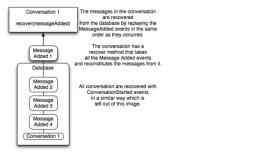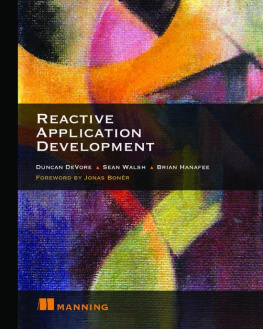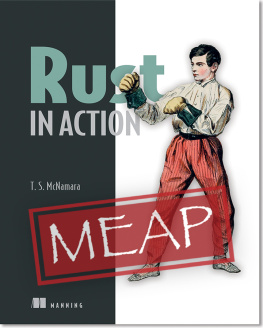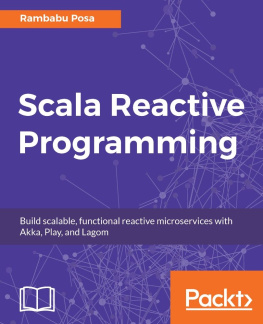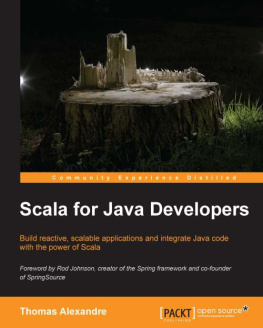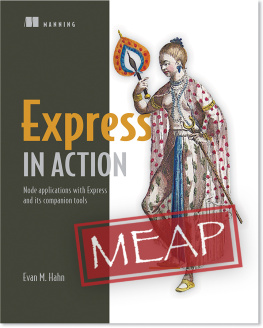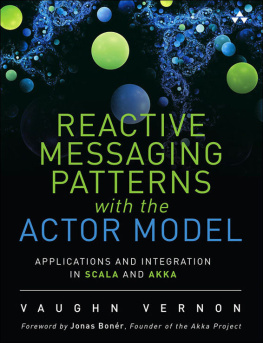Raymond Roestenburg - Akka in Action
Here you can read online Raymond Roestenburg - Akka in Action full text of the book (entire story) in english for free. Download pdf and epub, get meaning, cover and reviews about this ebook. year: 2016, publisher: Manning Publications, genre: Home and family. Description of the work, (preface) as well as reviews are available. Best literature library LitArk.com created for fans of good reading and offers a wide selection of genres:
Romance novel
Science fiction
Adventure
Detective
Science
History
Home and family
Prose
Art
Politics
Computer
Non-fiction
Religion
Business
Children
Humor
Choose a favorite category and find really read worthwhile books. Enjoy immersion in the world of imagination, feel the emotions of the characters or learn something new for yourself, make an fascinating discovery.
- Book:Akka in Action
- Author:
- Publisher:Manning Publications
- Genre:
- Year:2016
- Rating:5 / 5
- Favourites:Add to favourites
- Your mark:
Akka in Action: summary, description and annotation
We offer to read an annotation, description, summary or preface (depends on what the author of the book "Akka in Action" wrote himself). If you haven't found the necessary information about the book — write in the comments, we will try to find it.
Summary
Akka in Action is a comprehensive tutorial on building message-oriented systems using Akka. The book takes a hands-on approach, where each new concept is followed by an example that shows you how it works, how to implement the code, and how to (unit) test it.
Purchase of the print book includes a free eBook in PDF, Kindle, and ePub formats from Manning Publications.
About the Technology
Akka makes it relatively easy to build applications in the cloud or on devices with many cores that efficiently use the full capacity of the computing power available. Its a toolkit that provides an actor programming model, a runtime, and required support tools for building scalable applications.
About the Book
Akka in Action shows you how to build message-oriented systems with Akka. This comprehensive, hands-on tutorial introduces each concept with a working example. Youll start with the big picture of how Akka works, and then quickly build and deploy a fully functional REST service out of actors. Youll explore test-driven development and deploying and scaling fault-tolerant systems. After mastering the basics, youll discover how to model immutable messages, implement domain models, and apply techniques like event sourcing and CQRS. Youl also find a tutorial on building streaming applications using akka-stream and akka-http. Finally, youl get practical advice on how to customize and extend your Akka system.
Whats Inside
- Getting concurrency right
- Testing and performance tuning
- Clustered and cloud-based applications
- Covers Akka version 2.4
About the Reader
This book assumes that youre comfortable with Java and Scala. No prior experience with Akka required.
About the Authors
A software craftsman and architect, Raymond Roestenburg is an Akka committer. Rob Bakker specializes in concurrent back-end systems and systems integration. Rob Williams has more than 20 years of product development experience.
Table of Contents
- Introducing Akka
- Up and running
- Test-driven development with actors
- Fault tolerance
- Futures
- Your first distributed Akka app
- Configuration, logging, and deployment
- Structural patterns for actors
- Routing messages
- Message channels
- Finite-state machines and agents
- System integration
- Streaming
- Clustering
- Actor persistence
- Performance tips
- Looking ahead
Raymond Roestenburg: author's other books
Who wrote Akka in Action? Find out the surname, the name of the author of the book and a list of all author's works by series.

